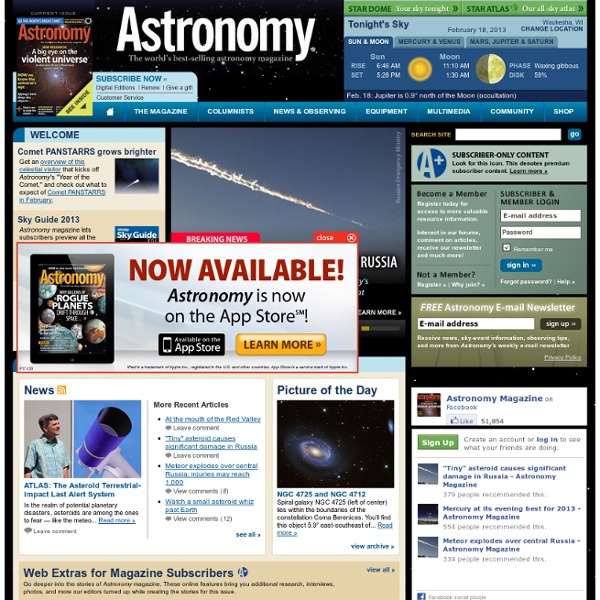Interactive Star Charts, Planets, Meteors, Comets, Telescopes

SpaceWeather
nature.com
Meade Telescopes, Celestron Telescopes and Telescope Accessories - OPT Telescopes
Weather Athens
Here we display the weather development for the next 7 days. Click on a tab to view a detailed day forecast. You can also use the keyboard arrow keys to navigate through the days, or if you use a touch screen, you can use the swipe function. Each tab includes a pictogram with the weather condition, maximal and minimal temperature, dominant wind speed and wind direction, the precipitation amount for 24h in mm and the sunshine hours. If you move your mouse over the logo for sunrise and sunset, also the current UV index is displayed. The 3-hour overview shows a more detailed forecast for the selected day: The top-left shows sun and moon rise and set times. Click on additional parameters to extend the forecast by the following parameters: The 3-hour values are extended by felt temperature, wind gusts and relative humidity.
Astronomy Picture of the Day
AstroVox :: Ερασιτεχνική Αστρονομία στην Ελλάδα :: www.astrovox.gr
www.olympia.gr
Arasteo Astrophotography
LIVE REAL TIME SATELLITE AND SPACE SHUTTLE TRACKING AND PREDICTI
openscience.gr
Related:
Related:



